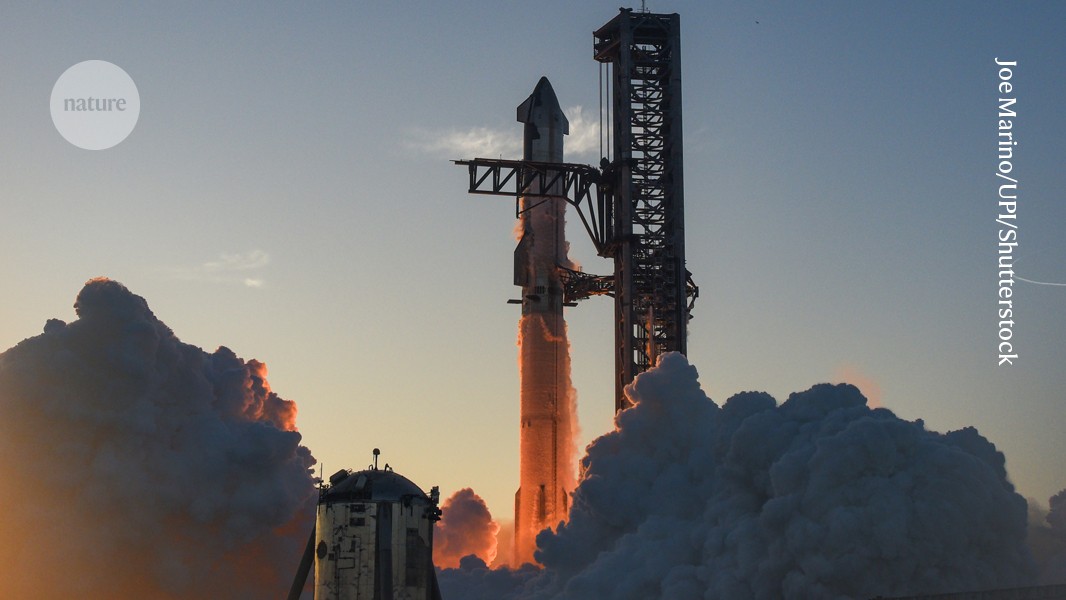- cross-posted to:
- [email protected]
- cross-posted to:
- [email protected]
The huge explosions that destroyed SpaceX’s Starship mega-rocket last year also blew one of the biggest ‘holes’ ever detected in the ionosphere, a layer of thin air in the upper atmosphere. The hole stretched for thousands of kilometres and persisted for nearly an hour, a study found1.
Study co-author Yury Yasyukevich, an atmospheric physicist at the Institute of Solar‐Terrestrial Physics in Irkutsk, Russia, says that the extent of the disturbance took his team by surprise: “It means we don’t understand processes which take place in the atmosphere.”
Neutralizing the air
The team examined publicly available data from more than 2,500 ground stations across North America and the Caribbean that receive satellite navigation signals. They found that the Starship explosions produced shock waves that travelled faster than the speed of sound, turning the ionosphere into a region of neutral atmosphere — a “hole” — for nearly an hour over a region stretching from Mexico’s Yucatán peninsula to the southeastern United States.
Rocket exhaust can trigger chemical reactions that produce temporary holes in the ionosphere even in the absence of an explosion, but in this case the shockwaves themselves had by far the larger effect.



Fascinating! But if the effects go away in merely one hour it’s probably hardly worth mentioning at an environmental level.
For example, it’s far more concerning how much new aerosol is contributed to the atmosphere by reentering spacecraft.